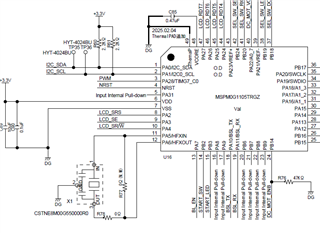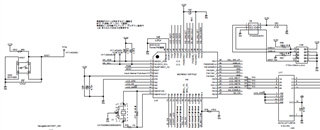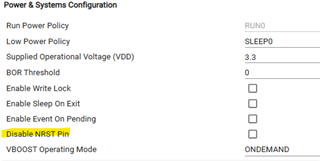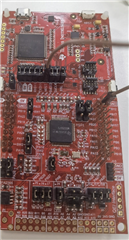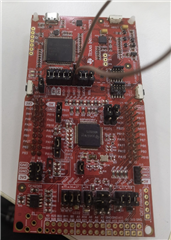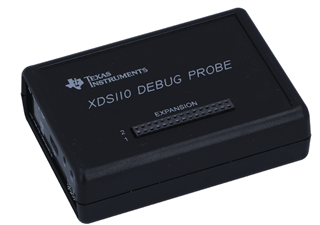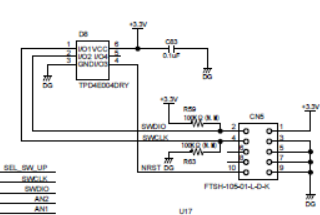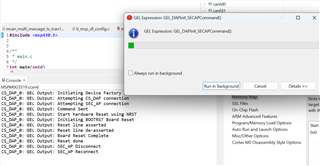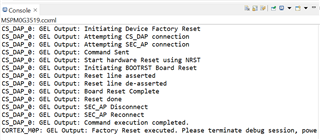Other Parts Discussed in Thread: SYSCONFIG, TMDSEMU110-U, LP-MSPM0G3507
Tool/software:
I have started debugging a prototype.
I have connected a ceramic resonator made by Murata Manufacturing to the outside.
The program has not been installed yet, and the power is only turned on, but it does not oscillate.
The product name is "CSTNE8M00G550000R0".
The Seiko Epson product introduced in the forum is difficult to purchase, so I chose the Murata product.
There is no matching information with MSPM0G1105, but it matches the MSP430F series and TMS320F series,
so I used it thinking it would be fine.
In my understanding, in order to oscillate with a ceramic resonator, the corresponding terminals must be assigned to HFXIN and HFXOUT.
(Manual setting using XDS110, program installation, etc.)
Is this thinking correct?
Thank you in advance.
Hiroshi Yamada


